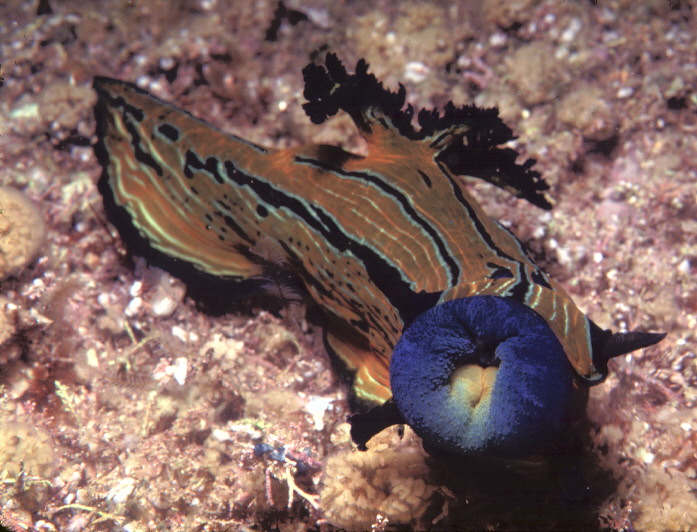 |
The "business end "of Roboastra tigris as photographed at Bahia de Los Angeles
Baja California, Mexico
July, 1997
Roboastra tigris was previously featured as Branch of the Week Week 70. R. tigris is a voracious predator of other nudibranchs, being especially fond of Tambja eliora and tambja abdere . As a result of a trip with Dr. Hans Bertsch and Sandra Millen to Bahia de Los Angeles, Baja California, in July 1997, updated pictorial behavior including defense mechanisms of T. eliora and T. abdere are being presented.
Webmaster's Note: This material was presented previously but not archived on the Site. This subsequent presentation is for those that missed the first time around and will be archived as Branch of the Week (Defense Mechanisms of Nudibranchs) #181!
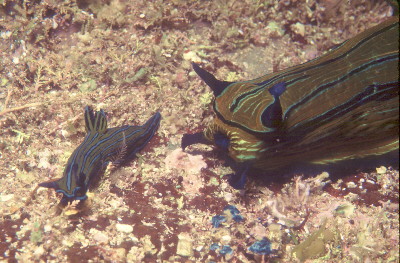
| R. tigris is seen approaching T. eliora, the intended prey. R. tigris is believed to track the slime trails of both T. eliora and T. abdere through chemoreception utilizing the cephalic (oral) tentacles. The chemical artifacts in the slime trail are the result of the prey nudibranchs feeding on bryozoans. In particular, Sessibugula translucens has been identified as a source of the class of chemical compounds known collectively as Tambja amines upon which R. tigris tracks in the slime trail. |
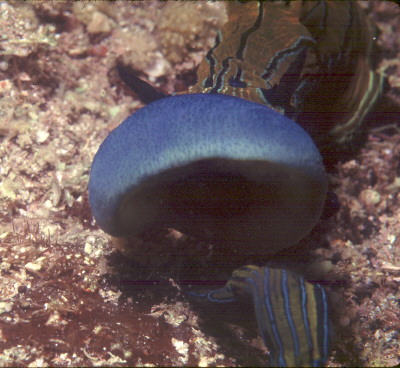
| R. tigris is extending its vacuum like blue oral hood in an attempt to envelope T. eliora, but T. eliora is already responding to the attack by resorting to a writhering, swimming motion to escape R. tigris |
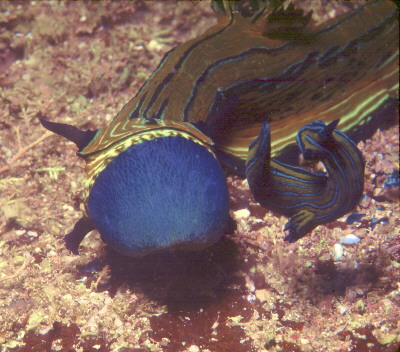
| T. eliora has successfully evaded this attack by swimming away, but tomorrow is another day in the precarious life of T. eliora at Bahia de Los Angeles. |
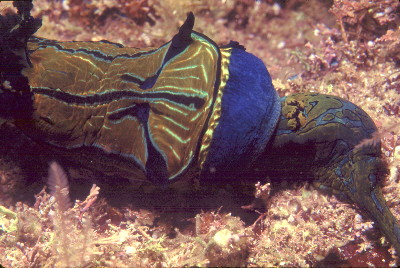
| R. tigris is not one to give up easily, and is now seen stalking and attacking T. abdere. |
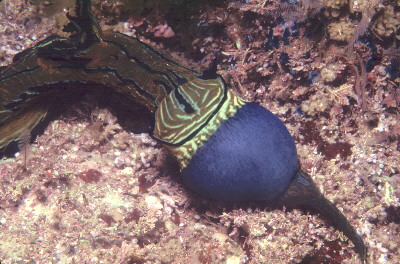
| T. abdere appears to be a goner, but surprisingly enough and not caught on film, R. tigris abruptly ejected T. abdere and consequently went hungry for the short term. The Webmaster must admit to setting up the above scenario, and in handling T. abdere, triggered the release of defensive chemicals by T. abdere which R. tigris immediately sensed and subsequently released its prey. The defensive chemicals are thought to the same Tambja amines utilized in tracking but which in higher concentrations will actually repel R. Tigris.
|
Photos and text by the Webmaster
REFERENCES
Carte, Brad Kevin, 1984, Cytotoxic metabolites from marine organisms, Ph.D. Thesis, University of California, San Diego, CA 92093.
Lance, James, R., Potential Prey of Robastra tigris, Opisthobranch Newsletter, August 1997, 23(8):29
